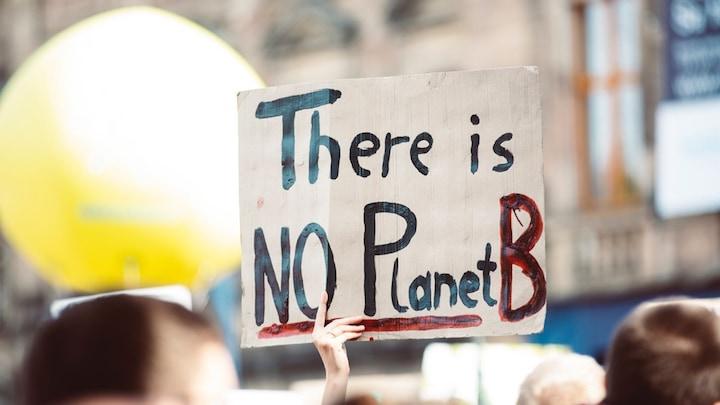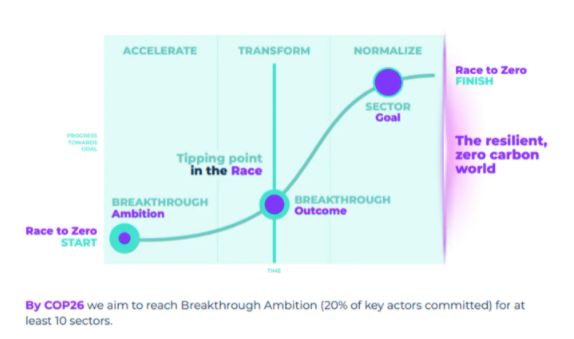5 Key Things to Know About COP26 and Global Climate Action
For nearly thirty years, the United Nation’s annual climate change conference has brought together government representatives, leaders and citizens to try to mitigate climate change. This year, however, the 26th Conference of the Parties, or COP26, has been described as ’the world’s last best chance to get runaway climate change under control.’
The Intergovernmental Panel of Climate Change recently released its working group 1 report; Climate Change 2021: The Physical Science Basis 2021. The report shows that there is no doubt that this current emergency is caused by human activity, if you had any doubt… Now is the time to act, and between October 31 and November 12, global leaders will have the possibility to write history when they meet at COP26 in Glasgow, UK.
COP26 will be hosted by the UK in partnership with Italy, and here’s what you need to know before the conference starts on October 31.
1. COP26 has four key themes
- Secure global net zero by mid-century, and keep 1.5 degrees within reach.To accomplish this, countries will need to phase out coal, curtail deforestration, switch to electric vehicles and incourage investments in renewables. This can only be achieved by decisive immediate action.
- Adapt to protect communities and natural habitats by protecting and restoring ecosystems.
- Mobilize finance. Developed nations must follow up on their promise to mobilise USD100bn per year.
- Work together to deliver – by finalizing the Paris rulebook and accelerating action between governments, business and civil society. This has been quite tricky, especially regarding Article 6, which aims to incentivize international cooperation and allow for flexibility in meeting country-level climate goals through a potential emissions trading system, which can hopefully lead to a global, coherant price system for carbon emissions. To limit emissions, we would hope for price increases, but we currently only have a few markets and tax systems, and no coherent system – a global system is key.
2. COP26 will balance public and private
COP26 is organized into two zones: the inner Blue Zone and the outer Green Zone.
The inner Blue Zone is beyond the security cordon and only ministers, accredited government officials, plus other specially accredited individuals and organizations get into this area. The main business within the Blue Zone involves the international negotiations over climate change agreements and actions.
Within the Blue Zone, there are pavilions where countries, organizations and businesses showcase what they are doing to combat climate change. There’ll also be a program of official fringe events that takes place within the Blue Zone. This program is organized by the UN, and places have been hotly contested, with only one in three proposals accepted.
At COP26, Ericsson has managed to be part of the Swedish Pavilion in the Blue Zone due to our collaboration with the Swedish government and Business Sweden. We will host several events in the EU, Swedish and Nordic pavilions that all are within the Blue Zone. We will talk to experts and peers about subjects like the EU green deal, financing green infrastructure, 5G roll-out and how digitalization can support climate action for increased mitigation in all societal sectors.
Beyond the Blue Zone is the Green Zone. This is where organizations that can afford it will have their own pavilion, exhibition, or event, to show what they’re doing about climate change. None of this is in the official COP program, and will be open for the public if they have ordered a ticket. This zone will attract lots of attention from those who can’t get into the Blue Zone, particularly from the media.
Outside the Green Zone will be an unofficial program of events taking place across Glasgow. These events will be organized by a wide range of organizations and individuals. We can also expect to see protests taking place outside the Green Zone, with some estimates suggesting these talks may attract up to 300,000 protestors.
3. It will be a crucial moment in light of the Paris Agreement
In 2015, world leaders met in Paris and made history. The Paris Agreement was adopted by 196 parties on December 12, 2015 and came into force on November 4, 2016. The Paris Agreement, for the first time, binded all nations into a common cause to combat global warming and mitigate climate change while also, unfortunately, having to adapt to it.
Within the agreement there is a goal to limit global warming to well below 2 degrees – preferrably 1.5 degrees – celsius, compared to pre-industrial levels. But already today, we have seen a rise in mean global temperatures above 1.2 degrees according to NASA.
The time limit for being able to reach the 1.5 ambition is running out. Scientists estimate that emissions must be reduced by 50 percent by 2030, and from there we must go to net-zero emissions by 2050, if the world is to have a good chance of limiting global warming to 1.5C.
To achieve this, we must focus on moving further towards zero less net, meaning we need to reduce emissions first, and at large, while only a small part can be counteracted by permanent carbon removals and nature based solutions.
According to the Paris Agreement, every five years countries should update their agreement ambitions, which are called the Nationally Determined Contributions (NDCs). Right now, these existing ambitions are not enough to meet the Paris Agreement goals.
The September UNFCCC NDC synthesis report, summarized information from the 164 latest available NDCs communicated by the 191 parties to the Paris Agreement. The synthesis report found increased engagements as countries have strenthened their commitment to limit greenhouse gas emissions by 2025/2030.
But unfortunately, the engagements are not enough. Based on the NDCs ambition, they would use up 89 percent of the remaining carbon budget by 2030. This means that the rest of the carbon allowed to be emitted post 2030 is only the size of the current annual emissions emitted globally. That’s why COP26 is such a crucial in the climate action calendar. We must get more countries to set more ambitious short and long-term goals now!
4. Connectivity can support climate action
Connectivity can accelerate climate action.
We believe that digital technologies have the potential to reduce net global greenhouse gas emissions by up to 15 percent by 2030, which represents a third of the 50 percent reduction targets needed by 2030 alone to at least have a chance, according to science. With other technologies like 5G, AI, and IoT, we can maybe do more and faster.
This 15 percent reduction means the global ICT sector can have a 10-fold impact when compared to the global ICT sector’s carbon footprint of 1.4 percent of global greenhouse gas emissions. Digitalization can be a driving force for countries to accelerate their climate ambition, but they need to invest and recognize this opportunity.
For example, as an open innovation platform, 5G could have a direct impact on reducing greenhouse gas emissions in a range of industries – from smart agriculture and public transport systems, to smart power grids supporting accelerated take-up of EVs and more renewable energy coming onstream supported by low latency 5G, and more efficient logistics.
5. Businesses and civil society can make a change
How can business and civil society truly get involved in global events like COP26 to ultimately accelerate climate action at the pace we need?
By launching the ‘Race to Zero Breakthroughs', the UN has set near-term goals for more than 20 global sectors. This essentially creates a master plan around what business, governments, and civil society need to do to accelerate global climate action ahead of COP26.
These efforts have been quite a success, and according to the COP26 presidency, there has been significant progress from business, with around 70 percent of the world economy now covered by net-zero targets for companies’ value chains. This has risen from 30 percent when the UK started its COP26 presidency.
The mobile sector has been leading in these efforts. Companies accounting for more than 33 percent of global revenue have commited to net-zero greenhouse gas emissions by 2050, according to the Race To Zero campaign. And already in January, the mobile industry reached a crucial 20 percent tipping point in these efforts, which is the key to accelerating systems transformation.
However, we as businesses need to be clear that long term net-zero emissions is not enough. We need to move towards zero now, by reducing emissions. The date 2030 is of utmost importance. We must halve our global emissions by then. These net-zero ambitions must therefore be followed by great milestone progress, including halving emissions by 2030 as the first priority.
We know it’s possible. In less than 10 years, Ericsson has cut its own emissions (fleet, facility, product transport, and business travel) by more than 70 percent, and we will continue to do more by at least halving our value chain emissions by 2030 aligned to our work with the Exponential Roadmap initiative. To achieve this, we’re working on reducing emissions within our supply chain, supporting our customers through our “Breaking the energy curve” approach and improving energy efficiency in our own products. We’re also relying on our customers to switch to renewable energy sources for their networks. And as shown in the image above in the UN Breakthrough Ambition, our customers are with us in this race.
As mentioned, civil society can play an important part in COP26. We’ve already seen this in the demonstrations and grass-roots movements that have taken place around the world. To support this and amplify the message and actions throughout civil society, we have chosen to partner with with the Exponential Roadmap initative and We Don’t Have Time.
We will create a virtual backdoor for everyone at COP26 by hosting the 4th Exponential Climate Action Summit in the Blue Zone, close to the negotiations and the event action. The last summit during NY Climate Week had over 8.8 million viewers on Twitter.
The events will be broadcast daily during the evening (GMT), showcasing innovators, distruptors and transformers in sectors like industry, buildings, energy and digitalization. We know the solutions are out there, we just need to scale them now by taking action.
Please join the discussion! We truly don’t have time to wait.
Learn more
Read Emelie’s previous blog post COP26: climate action and the role of policy, business and technology in 2021
Learn more about Making a positive impact: how tech is helping us restore planet earth.



